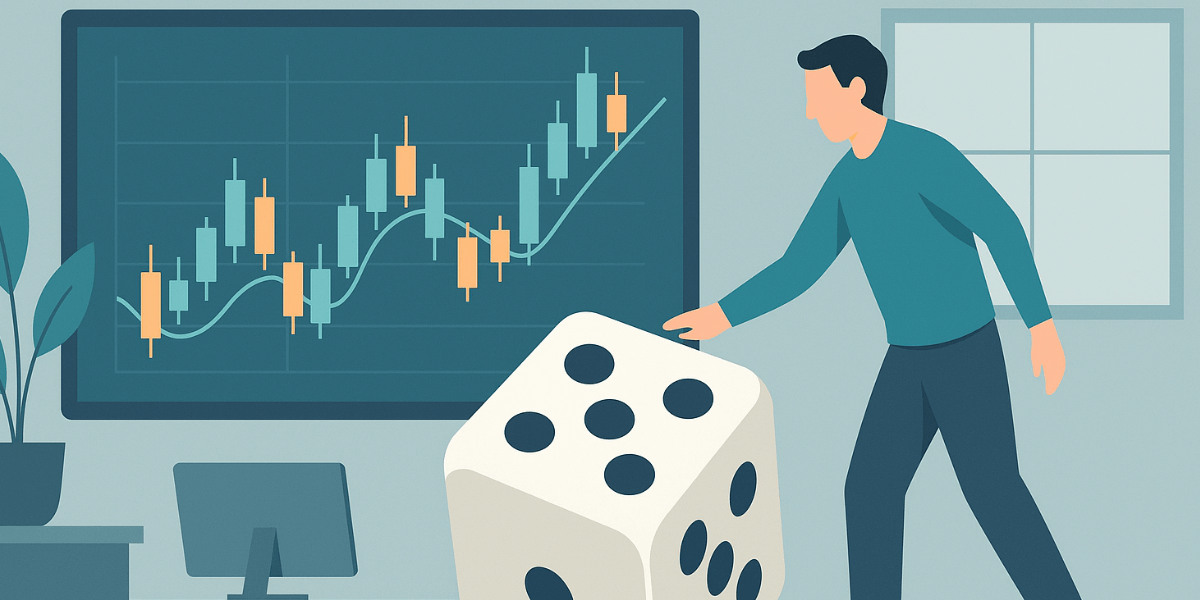In professional trading, the ability to visualize and quantify risk is as important as identifying profitable opportunities. A trader who understands exposure, correlation, and drawdown dynamics can survive market chaos; one who ignores them eventually becomes its victim. This is why institutional traders rely on complex risk dashboards that condense thousands of data points into simple, actionable insights. However, building a personal version of that institutional framework is possible, even for retail traders. The key lies in defining the right metrics, structuring the data, and using accessible visualization tools to monitor performance and limit exposure in real time.
This guide explores how to design and build your own personal risk dashboard for forex trading. It is not just about creating charts or tables, but about constructing a decision-support system—a mirror that constantly reflects your risk behavior, portfolio volatility, and capital efficiency. By the end, you will understand what data to collect, how to calculate key indicators, and how to integrate them into a living dashboard that evolves with your strategy.
Why Every Trader Needs a Risk Dashboard
Markets are complex ecosystems of volatility, liquidity, and emotion. In forex, these elements amplify because leverage magnifies every mistake. A risk dashboard transforms this chaos into structure by answering three critical questions: How much am I risking right now? How efficiently am I using my capital? What is the probability that my system will survive its next drawdown?
Most traders focus on entry systems and indicators but ignore their exposure until something breaks. A dashboard is not a luxury; it is an instrument of survival. It allows you to visualize your account’s health, see concentration in currencies or directions, monitor correlations, and anticipate stress before it manifests as loss. The best traders use dashboards daily—because they know that what gets measured gets managed.
Step 1: Defining What Risk Means to You
The first step is conceptual. “Risk” is not a single number. It has multiple layers—position risk, portfolio risk, liquidity risk, and even psychological risk. A good dashboard captures the dimensions that matter most to your trading style. For example, a scalper’s dashboard might focus on per-trade volatility and slippage; a swing trader’s dashboard might focus on aggregate drawdowns and correlation exposure.
Ask yourself the following:
- What type of risk do I face most often? (volatility, overleverage, correlation, emotional impulsiveness)
- What data can I realistically collect from my platform or broker?
- How frequently do I need to update my data—real time, hourly, or daily?
- What is the one metric that, if it spikes, tells me to stop trading?
Once you can answer these, you can start defining metrics that transform “intuition” into measurable quantities.
Step 2: The Core Metrics to Track
A professional risk dashboard usually includes five categories of metrics. Each tells a different story about your trading health:
1. Position-Level Metrics
- Position Size: The notional value of each trade, adjusted for leverage.
- Risk per Trade: The amount of equity at risk based on stop-loss distance and lot size, expressed as a percentage of equity.
- Leverage Usage: Total notional exposure divided by equity. High leverage magnifies volatility exponentially.
- Stop Distance: Average pips to stop relative to volatility; smaller distances imply more sensitivity to noise.
2. Account-Level Metrics
- Equity Curve: The cumulative value of your account including unrealized P/L.
- Drawdown: The peak-to-trough decline of equity in percentage terms. The smaller your maximum drawdown, the stronger your risk management.
- Profit Factor: The ratio of gross profit to gross loss; a measure of trade efficiency.
- Expectancy: The average profit or loss per trade, based on historical outcomes.
3. Portfolio-Level Metrics
- Currency Exposure: Total long vs. short exposure per currency (e.g., total USD long positions).
- Directional Bias: Percentage of portfolio long vs. short overall.
- Correlation Matrix: How pairs move relative to each other; high correlations indicate redundant risk.
- Volatility Concentration: Whether your portfolio is overexposed to high-volatility pairs.
4. Temporal Metrics
- Holding Periods: Average duration of trades; helps identify impatience or overtrading.
- Time of Day Performance: Profitability segmented by session (Tokyo, London, New York).
- Equity Recovery Time: Average number of trades or days needed to recover from drawdowns.
5. Behavioral Metrics
- Rule Violations: Number of trades taken outside your plan (no stop, oversized lot, emotional entry).
- Trade Frequency: Too high or low can signal emotional bias.
- Win/Loss Streaks: To track psychological exposure—too many wins can lead to overconfidence; too many losses can lead to revenge trading.
Step 3: Choosing Tools and Platforms
You don’t need enterprise-grade software to build a meaningful risk dashboard. The essential components are data extraction, calculation, and visualization. Here are several layers to combine:
Data Extraction
- Most brokers (MT4, MT5, cTrader) export trade history in CSV format.
- APIs (like MetaTrader’s or cTrader’s) can stream live account data for real-time dashboards.
- Python scripts or Excel macros can automate the import of daily balance and position data.
Calculation Engine
- For beginners: Excel or Google Sheets—sufficient for computing P/L, drawdowns, and averages.
- For advanced users: Python or R for risk metrics, correlation matrices, Monte Carlo simulations, or VaR models.
- For automation: Connect APIs to a lightweight database (SQLite or Google BigQuery) for ongoing tracking.
Visualization Layer
- Excel dashboards with charts and conditional formatting.
- Google Data Studio or Tableau for interactive web dashboards.
- Plotly Dash or Power BI for custom risk interfaces with real-time updates.
Step 4: Designing the Dashboard Structure
A risk dashboard should tell a coherent story at a glance. A simple but powerful layout divides the screen into four quadrants:
- Top Left: Current exposure summary (equity, leverage, total risk open).
- Top Right: Portfolio overview (positions by currency, correlation heatmap).
- Bottom Left: Equity curve and drawdown graph.
- Bottom Right: Behavioral metrics (rule violations, trade streaks, time-of-day stats).
Each quadrant should use minimal colors and consistent scales. Visual clutter destroys the purpose of risk dashboards. Clarity is power. Use green for positive metrics, red for danger, and gray for neutral. Avoid fancy gauges—risk management thrives on precision, not decoration.
Step 5: Integrating Volatility and Correlation
Volatility and correlation are the DNA of portfolio risk. You can’t manage exposure if you don’t understand how your trades interact. Suppose you have a long EUR/USD and a short USD/CHF. While they appear opposite, both express a long Euro and short USD bias. A dashboard that simply lists open trades would miss this. A correlation matrix, on the other hand, exposes overlapping risk immediately.
Use a heatmap to visualize correlation. Red zones indicate highly correlated pairs, while blue zones show diversification. If more than 60% of your trades cluster in correlated directions, you are not diversified—you are leveraged twice over without realizing it. Add volatility overlays to identify how concentration interacts with noise. High correlation plus high volatility equals systemic risk.
Step 6: Implementing Drawdown and Risk Limits
Professional traders define risk limits before entering the market. Your dashboard should automate this discipline. Common configurations include:
- Per-Trade Limit: 1% of equity per trade.
- Daily Limit: 3% maximum equity drawdown in a single session.
- Weekly Limit: 5–6% total drawdown before a cooldown period.
Integrate these thresholds visually: use conditional formatting that turns orange at 70% of the limit and red at 100%. A simple signal—“stop trading”—is more effective than dozens of metrics if you actually obey it. The dashboard is not only analytical; it is behavioral enforcement.
Step 7: Tracking Equity Curve and Recovery Time
The equity curve is the heartbeat of your trading business. It tells the story of your strategy’s consistency and resilience. A good dashboard plots both equity and drawdown on the same chart, ideally in real time. Combine this with a moving average to smooth noise and reveal trends in performance.
Add a metric called Recovery Factor—the ratio of total profit to maximum drawdown. Values above 2.0 indicate efficient recovery; values below 1.0 indicate fragile systems. Measure Average Trade Duration and Days to Recover after drawdowns. These numbers reflect the emotional and financial rhythm of your system and should influence position sizing and leverage decisions.
Step 8: Integrating Psychological Metrics
No dashboard is complete without behavioral data. Even the best algorithms fail under emotional stress. Tracking behavior transforms trading psychology into measurable information. Examples:
- Rule Adherence Rate: Percentage of trades executed according to predefined rules.
- Impulse Trades: Entries without confirmation or before setup completion.
- Emotional Overrides: Manual exits before the target or after the stop trigger.
These can be tracked manually in a trading journal and aggregated weekly. You can visualize them as bar charts or ratios—showing how discipline correlates with profit. The goal is awareness, not perfection. Awareness leads to control; control leads to longevity.
Step 9: Evaluating Systemic Risk in Your Portfolio
Systemic risk is the risk of everything moving against you at once. It can come from macro shocks (interest rate surprises, geopolitical events) or liquidity dry-ups. To measure systemic exposure, your dashboard can include:
- Percentage of trades aligned with a single macro theme (e.g., all USD short).
- Weighted exposure by volatility-adjusted notional.
- Simulation of 2-standard-deviation currency moves to estimate tail loss.
This transforms your dashboard from a passive display into a predictive warning system. When systemic risk exceeds tolerance, scale down positions or hedge exposures.
Step 10: Continuous Improvement and Automation
The final step is iteration. A good dashboard evolves as your strategy matures. Add new metrics only when they help you make better decisions. Review your dashboard weekly: What metric surprised you? Which one saved you from a bad trade? Which one did you ignore?
Automation enhances reliability. Utilize scheduled scripts to automatically refresh data, generate alerts, or send daily summaries via email. The less manual work involved, the more consistent your discipline. But never outsource awareness—always understand what the dashboard tells you and why.
Example Layout
| Section | Metrics | Purpose |
|---|---|---|
| Exposure Overview | Leverage, Open Risk, Currency Bias | Identify concentration and overexposure |
| Performance Metrics | Equity Curve, Drawdown, Recovery Factor | Monitor consistency and capital efficiency |
| Behavioral Metrics | Rule Violations, Impulse Trades | Evaluate emotional discipline |
| Volatility & Correlation | Pair Volatility, Correlation Matrix | Detect redundant risk and diversification gaps |
| Alerts | Drawdown, Leverage, Exposure Thresholds | Trigger automatic protective actions |
Conclusion
Creating a personal risk dashboard is not about complexity—it is about clarity. It gives structure to chaos and transforms trading from a sequence of impulses into a controlled process. Whether you use Excel or a Python API, the principle is the same: know your exposure, respect your limits, and learn from your behavior. A dashboard becomes a compass that points toward sustainability. The trader who measures risk controls destiny; the one who ignores it hands control to randomness.
Frequently Asked Questions
What is a forex risk dashboard?
A forex risk dashboard is a personalized interface that displays key metrics such as leverage, drawdown, exposure, and correlation, helping traders manage risk and make data-driven decisions.
Which tools can I use to build a forex risk dashboard?
You can use Excel, Google Sheets, Power BI, Tableau, or Python libraries like Dash or Plotly. Choose the tool based on your technical comfort and data automation needs.
How often should I update my dashboard?
Scalpers may need real-time updates; swing traders can update daily. The key is consistency. Automate where possible to avoid missing data points.
What metrics are most important?
Focus on risk per trade, leverage, maximum drawdown, correlation, and expectancy. These define your trading system’s sustainability.
Can I integrate psychological data?
Yes. Track rule violations, impulse trades, and overtrading episodes. These indicators often explain losses more accurately than market conditions.
How do I handle correlated positions?
Use a correlation heatmap to identify overlapping exposure. Close or hedge trades that move in the same direction with high correlation.
Is automation necessary?
Not essential but highly recommended. Automation ensures your dashboard updates without emotional bias or fatigue, reinforcing objective decision-making.
What is a good drawdown limit?
Institutional traders typically cap daily drawdown at 3% and weekly at 6%. The right limit depends on your risk tolerance and strategy volatility.
How can a dashboard improve my discipline?
It turns subjective intuition into objective data. When you see risk visualized, you are less likely to break rules or overtrade.
Does a dashboard guarantee profitability?
No. It guarantees awareness, which is a prerequisite for profitability. The dashboard cannot control the market—but it can control you.
Note: Any opinions expressed in this article are not to be considered investment advice and are solely those of the authors. Singapore Forex Club is not responsible for any financial decisions based on this article's contents. Readers may use this data for information and educational purposes only.







